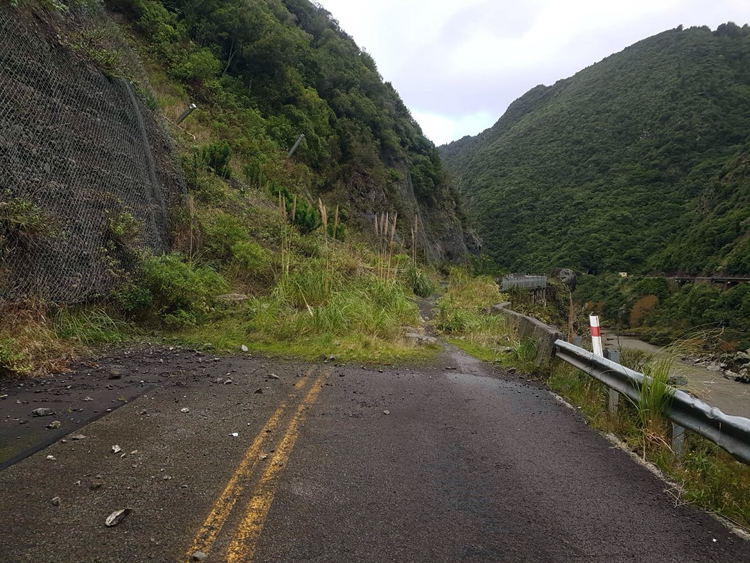Waka Kotahi NZ Transport Agency has confirmed that much of the old highway through Manawatū Gorge remains unsafe for vehicles, now and in the future.
The findings are detailed in a new geotechnical assessment of the old road though Te Āpiti Manawatū Gorge, which has reconfirmed the decision made in 2017 to close the road after repeated slips left SH3 through the Gorge impassable.
Waka Kotahi commissioned engineering geologists to survey a 11km stretch of Te Āpiti, from the Ashhurst Bridge in the west to the intersection with Woodlands Road to the east and report back on the current and future risks such as landslides and rockfalls.
The draft report has now been completed and is undergoing a peer review. Waka Kotahi shared the draft findings with mana whenua and other project partners on Thursday.
Waka Kotahi Regional Manager System Design Manawatu/Taranaki/East Coast, Sarah Downs, says the new results have reconfirmed assessments carried out following the 2017 closure of the gorge, which showed the risks were too high to consider reopening the gorge to traffic, without significant safety and costly mitigation.
“The 2017 findings informed our decision to progress with the design and construction of the Te Ahu a Turanga: Manawatū Tararua Highway, which will provide a much safer and more resilient route between Woodville and Ashhurst.
“The new assessment looked at the risks of landslides and rockfalls over the next 20 years, and considered how the road and existing infrastructure such as bridges, retaining walls and rock fall mesh might deteriorate over time.
“The assessment concluded that much of the gorge, including an almost four-kilometre-long section in the middle, would expose people travelling in vehicles to an unacceptably high risk of injury or death,” Ms Downs said.
The new assessment looked at the risks posed by landslides and rockfalls to people in vehicles, as well as the risks if access was provided through the gorge to people on foot, bikes or horseback.
Risk levels changed over the various time periods, showing an increase over time. The risks to people walking or riding a horse or bike were lower than people travelling in a vehicle, however work would need to be undertaken to support safe public access.
“At the present time the conditions mean it is simply too hazardous to allow public access of any form on the route of the old highway. We want to remind everyone that it is not safe to proceed beyond the locked gates at the entrances to the gorge,” Ms Downs said.
Ms Downs says Waka Kotahi will continue to work with iwi, LINZ and the different parties responsible for managing parts of the Gorge to progress next steps.
As the old road is no longer required as part of the transport system, Waka Kotahi is unable to fund any future work on the road, outside the scope of the revocation of its status as a state highway and to meet legal obligations.
Ms Downs says Waka Kotahi recognises that Te Āpiti is a special area, and is committed to engaging with community partners on how to best protect, preserve and enhance the area.
“Working with our community partners, we will develop a management plan on how to manage risks in the future under different ownership. Appropriate public access could be provided at this point if funding is secured.”

Kerry’s Wall slip taken 19 May 2021, view west-bound.

Boulders from slip at west end of Gorge taken 19 May 2021, view west-bound.